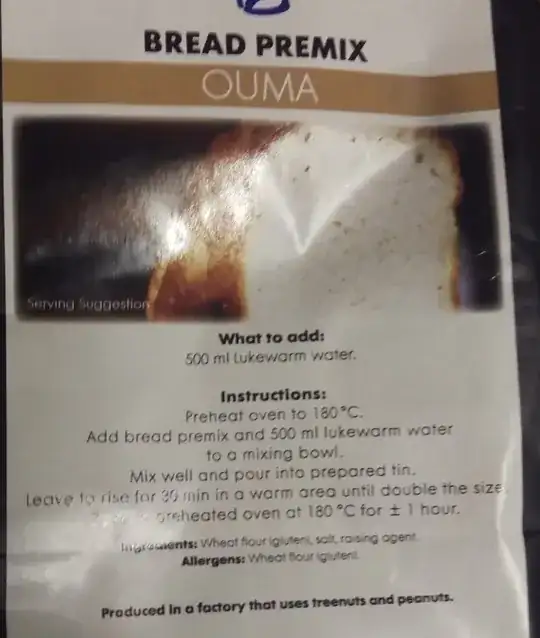I have been unable to find bread flour in my local grocery store, but did find a bread mix that contained three ingredients (wheat flour, salt and raising agent). Judging by the instructions on the pack to leave the dough to rise, I figured the raising agent was yeast and that it would be a decent substitute for bread flour.
My usual recipe is 750g flour, 1pkt yeast, some salt, couple tb sugar, 100ml oil and 600ml water. I treated this flour in the same way and immediately ran into issues:
- It was extremely dry. I usually like a higher hydration loaf and expect it to be quite sticky and it was behaving like a much lower hydration dough. I ended up having to add another 75ish ml to get it to be the way it should be.
- It took ages to knead. I usually knead by hand 10-ish minutes, and it must have taken a good 25 minutes to knead, and even then it didn't pass a proper window pane test, but I'd given up by that point.
Apart from the above, the rest of the process went fine, I did a doubled-in-size rise, shaped into pans and then a 30 min rise, and then into the oven at 200C for 45ish minutes. The crumb was tighter than I'm used to but it was still a decent enough loaf.
So now I'm curious what exactly this bread mix is, and exactly why this behaved so differently. My current hypotheses:
- Perhaps a lower gluten content bread.
- Perhaps a quickbread mix that actually had a chemical leavened. (but then why do they instruct to leave the bread to rise?)
Would either of these cause my mix to be really dry and take ages to knead properly? Or something else?
